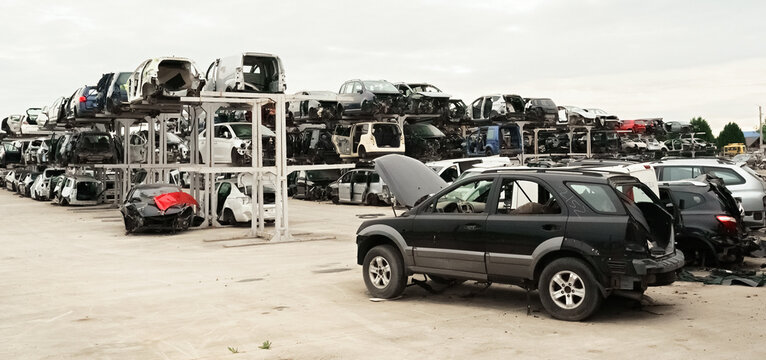Automotive recycling is an essential part of the global effort to reduce waste and promote sustainable practices. With the rapid evolution of vehicle technology, the recycling industry has had to adapt to meet new challenges and opportunities. From handling electric vehicle (EV) batteries to improving recycling rates of various vehicle components, the automotive recycling industry has become a critical part of the circular economy. This blog explores the emerging trends in automotive recycling, shedding light on the ways it is evolving to meet future demands. These advancements are crucial for a sustainable automotive industry, ensuring that end-of-life vehicles (ELVs) can continue to offer value even after they are no longer roadworthy.
Increased Focus on Electric Vehicle (EV) Battery Recycling
One of the most significant changes in automotive recycling has been the rise of electric vehicles and, with it, the need for EV battery recycling. Unlike conventional vehicle parts, EV batteries contain rare metals such as lithium, cobalt, and nickel. These metals are expensive and require intensive mining, which has a significant environmental impact. Recycling EV batteries allows for the recovery of these valuable materials, reducing the need for mining and helping lower production costs for future EVs.
As EVs become more widespread, so does the demand for efficient and safe recycling methods for batteries. Many companies and researchers are investing in new technologies to make battery recycling more efficient, environmentally friendly, and cost-effective. This shift is also pushing governments and manufacturers to establish guidelines and regulations for proper EV battery disposal and recycling, ensuring a sustainable approach as EV adoption continues to grow.
Technological Innovations in Recycling Processes
Advancements in technology are transforming the way automotive recycling is done. Modern dismantling processes, automated machinery, and artificial intelligence (AI)-assisted sorting systems have increased the efficiency and precision of recycling operations. For instance, AI technology can now accurately identify different types of materials in a vehicle, which allows recycling facilities to streamline sorting and categorizing components for reuse, recycling, or disposal.
Additionally, the use of robotics in recycling facilities is revolutionizing the dismantling process. Robots can assist in removing valuable components like engines and transmissions with higher speed and accuracy, making the process safer for workers and reducing labor costs. Such innovations highlight a promising future for automotive recycling, where new technologies enable higher recovery rates of valuable materials, ultimately reducing waste and supporting environmental goals.
The Importance of Sustainable Material Recovery
Another key trend in automotive recycling is the emphasis on sustainable material recovery. Vehicles contain a mix of materials, including steel, aluminum, plastic, and glass. Recycling each of these materials reduces the need for virgin resources, which in turn helps decrease greenhouse gas emissions and energy consumption. Automotive recycling now aims to recover as much material as possible from each vehicle, reducing the amount sent to landfills.
In addition, automakers are increasingly focusing on designing vehicles with recyclable materials and components. This design-for-recycling approach makes it easier to dismantle and recycle parts once the vehicle reaches the end of its life. For example, some car manufacturers are replacing non-recyclable plastics with bio-based plastics that can be more easily processed. This focus on sustainable material recovery not only aligns with environmental goals but also prepares the industry for future regulations that may require higher recycling standards.
The Role of Extended Producer Responsibility (EPR) Programs
Extended Producer Responsibility (EPR) is a policy approach that holds manufacturers accountable for the end-of-life management of their products. EPR programs encourage automakers to take responsibility for the disposal or recycling of vehicles they produce, which can lead to more sustainable production practices and recycling innovations. Under EPR policies, automakers may be required to establish or fund recycling facilities, ensuring that ELVs are processed responsibly.
Countries such as Japan and those in the European Union already have EPR regulations in place, and there is a growing interest in implementing similar policies worldwide. By encouraging manufacturers to invest in recycling, EPR programs help create a closed-loop system where vehicles and their parts can be repurposed rather than discarded. As EPR programs expand, they will likely drive more automakers to innovate in sustainable design and recycling practices.
Growth of Localized Recycling Facilities and Processes
Another trend reshaping automotive recycling is the growth of localized recycling facilities for scrap cars in Brisbane and other regions. Previously, many vehicles and parts were shipped to distant recycling centers, which involved high transportation costs and environmental impact. Now, more recycling companies are setting up local facilities that can handle ELVs within the region. This trend not only reduces the carbon footprint associated with long-distance transport but also supports local economies by creating jobs in recycling and materials processing.
Localized recycling facilities also enable faster and more effective processing of vehicles. By establishing more centers for vehicle dismantling and recycling, communities can handle their automotive waste more sustainably, contributing to a more efficient recycling network. This trend is especially relevant as urbanization continues and cities seek ways to manage waste sustainably within their own boundaries.
Growing Demand for Parts Reuse and Remanufacturing
As consumers become more aware of sustainability, the demand for reused and remanufactured vehicle parts is growing. Reusing parts from recycled vehicles not only lowers costs but also reduces waste and energy usage. Components such as engines, transmissions, and alternators can often be salvaged, refurbished, and sold for reuse in other vehicles, providing an eco-friendly alternative to purchasing new parts.
The trend toward remanufacturing aligns with the broader shift in the automotive industry toward sustainability. Reusing parts has environmental benefits and economic advantages, as remanufactured parts typically cost less than brand-new ones. As more consumers and businesses recognize these advantages, the demand for recycled automotive parts is expected to rise, further supporting the circular economy.
Also visit : https://jimmycashforcars.com.au/cash-for-cars-caboolture/
Embracing Digital Solutions for Improved Efficiency
Digital transformation is playing a crucial role in improving the efficiency of automotive recycling. Recycling facilities are now utilizing advanced software solutions for tracking, inventory management, and resource allocation. Digital platforms can connect recycling companies with buyers for recovered parts, enabling a seamless exchange of materials and reducing inventory costs.
Furthermore, digital solutions allow for better compliance with environmental regulations by providing accurate data on material recovery and waste management practices. As digital tools become more prevalent, they are expected to optimize operations, lower costs, and improve the transparency and accountability of the recycling process. This digital shift is vital for the industry as it works toward more sustainable practices.
Cash for Cars and the Junkyard Industry
As automotive recycling evolves, services like Total Car Removal in Sydney are essential for managing the disposal of end-of-life vehicles. These services provide an efficient way for owners to part with unwanted vehicles and ensure they are responsibly recycled. Companies that offer unwanted car removal Sydney services play a crucial role in the industry by collecting junk cars and transporting them to recycling facilities where they are dismantled and processed. This approach allows vehicle owners to benefit from recycling programs while supporting sustainable practices in the automotive industry. By providing an option for easy vehicle disposal, junk car removal services are helping to build a future where recycling is more accessible and effective.
Conclusion
The future of automotive recycling is set to become increasingly sophisticated, with new technologies and trends paving the way for more sustainable practices. From the rise of EV battery recycling to the growth of localized facilities and digital tools, the industry is undergoing a transformation aimed at reducing waste, conserving resources, and lowering environmental impact. With trends like EPR policies and the growing popularity of remanufactured parts, automotive recycling is moving toward a more circular economy, where materials are continually repurposed and reused.
As automotive recycling advances, it will not only help preserve natural resources but also offer consumers sustainable options for disposing of their old vehicles. Embracing these trends will be essential for the industry to meet future environmental challenges, contributing to a cleaner and more sustainable world. The automotive recycling industry is on the brink of an exciting future, where vehicles at the end of their life can continue to provide value long after they are no longer driven.
Discover related articles on our blog.





